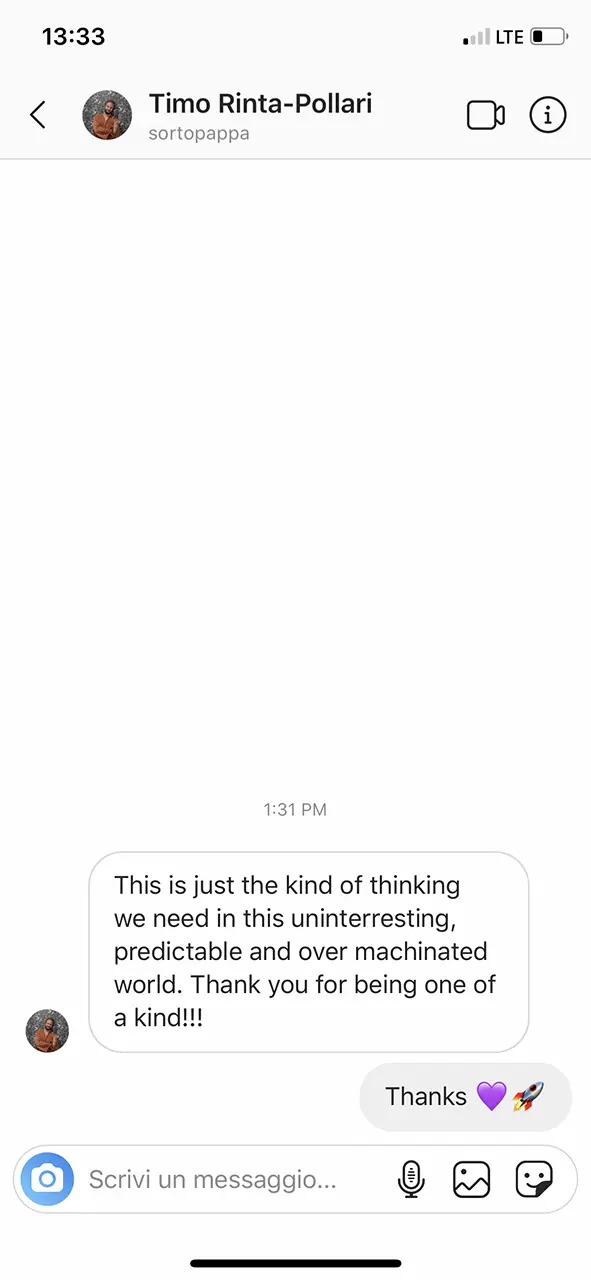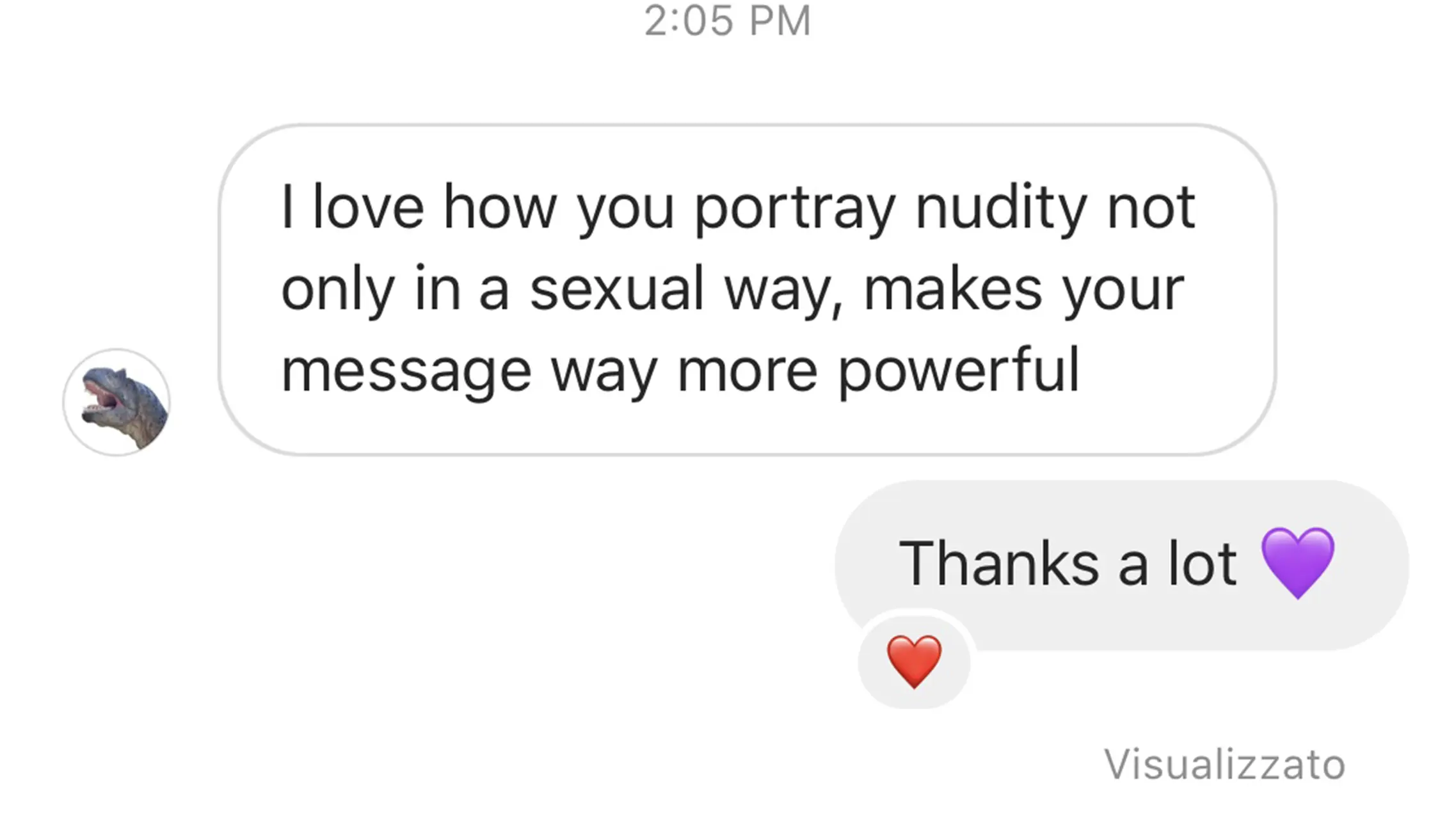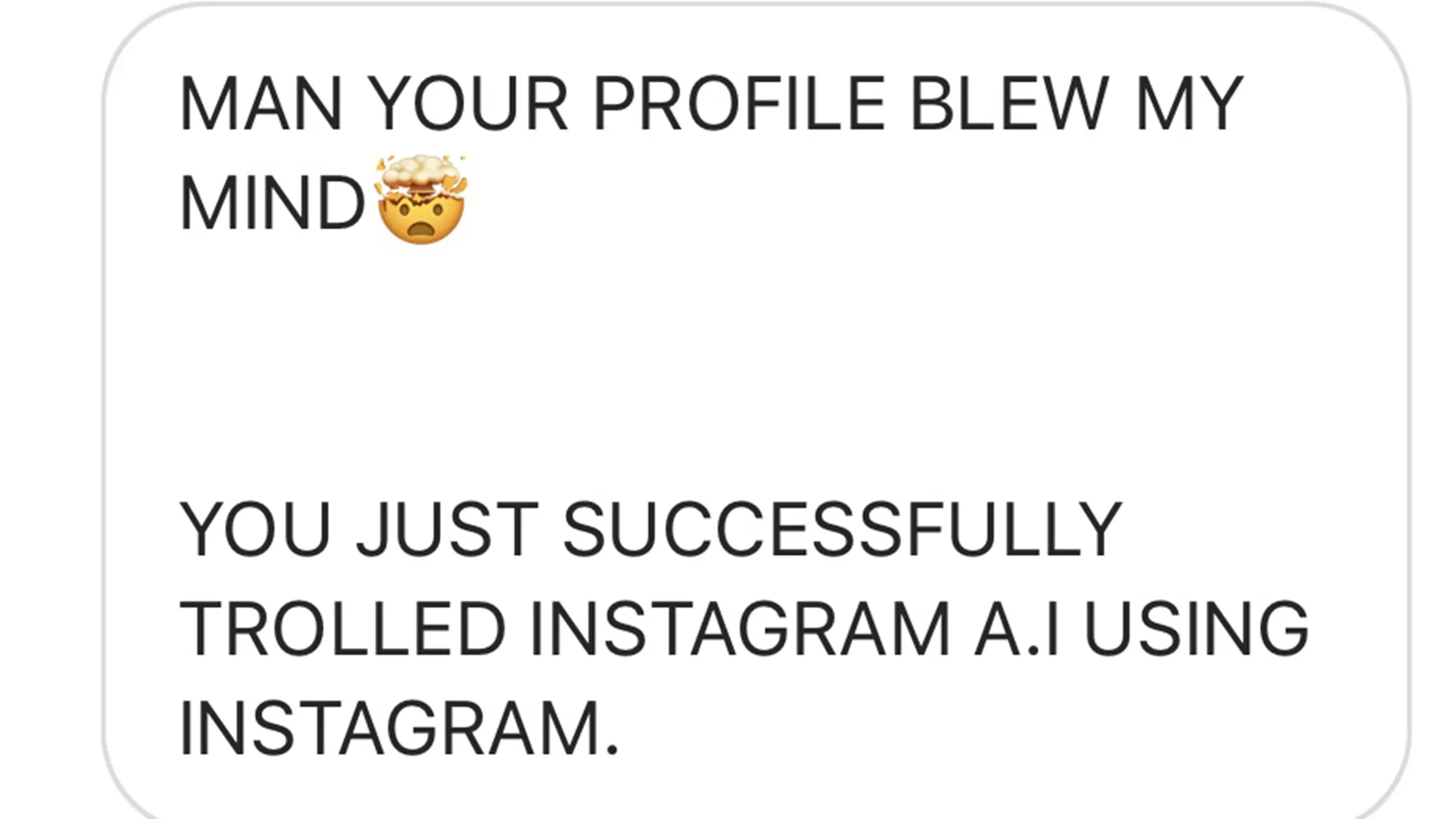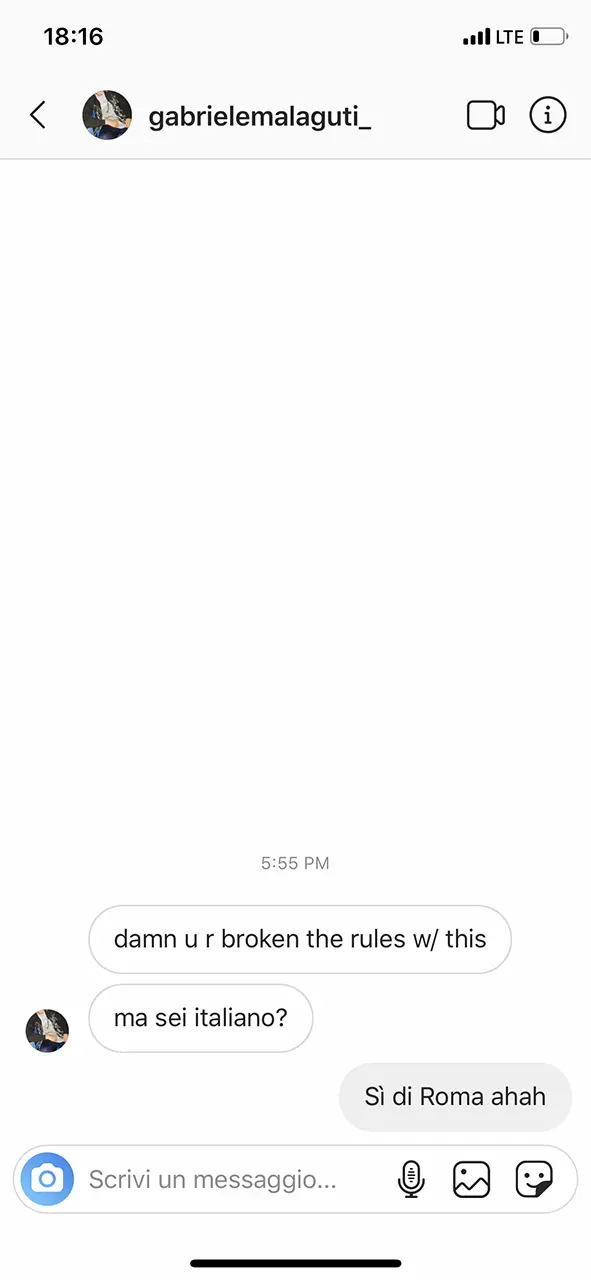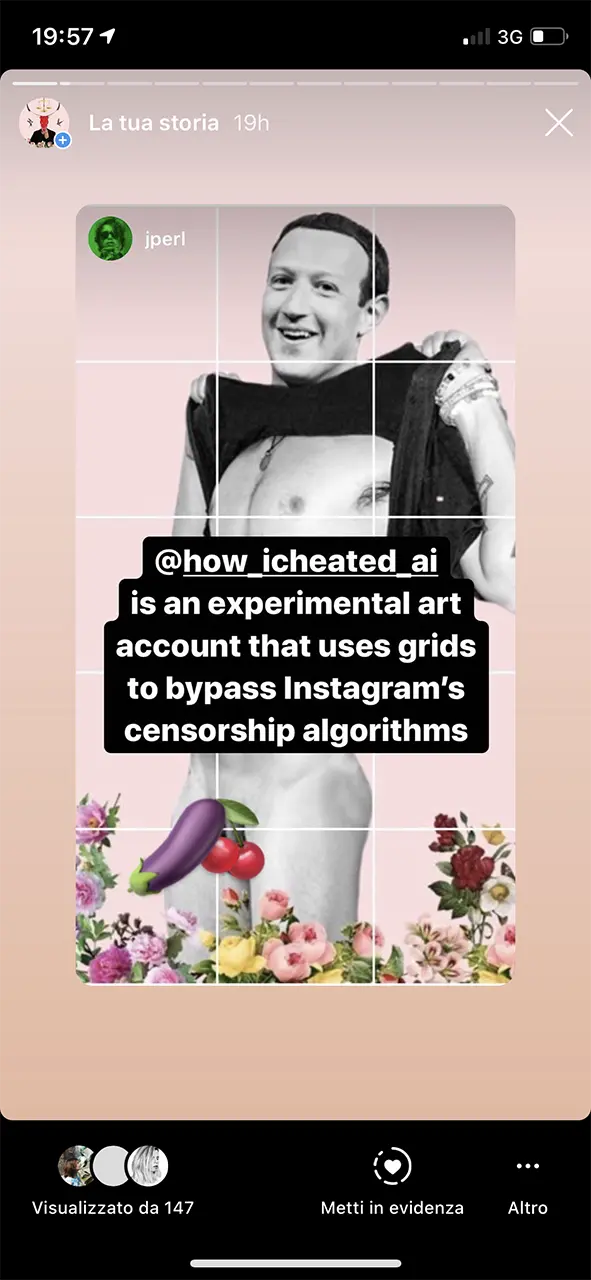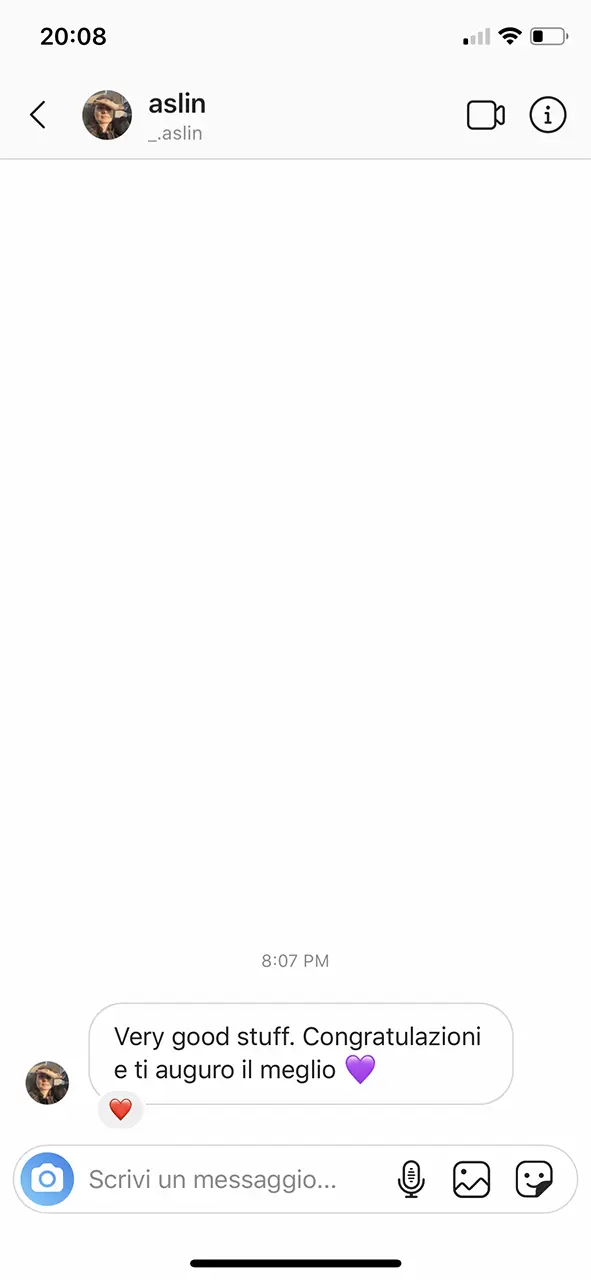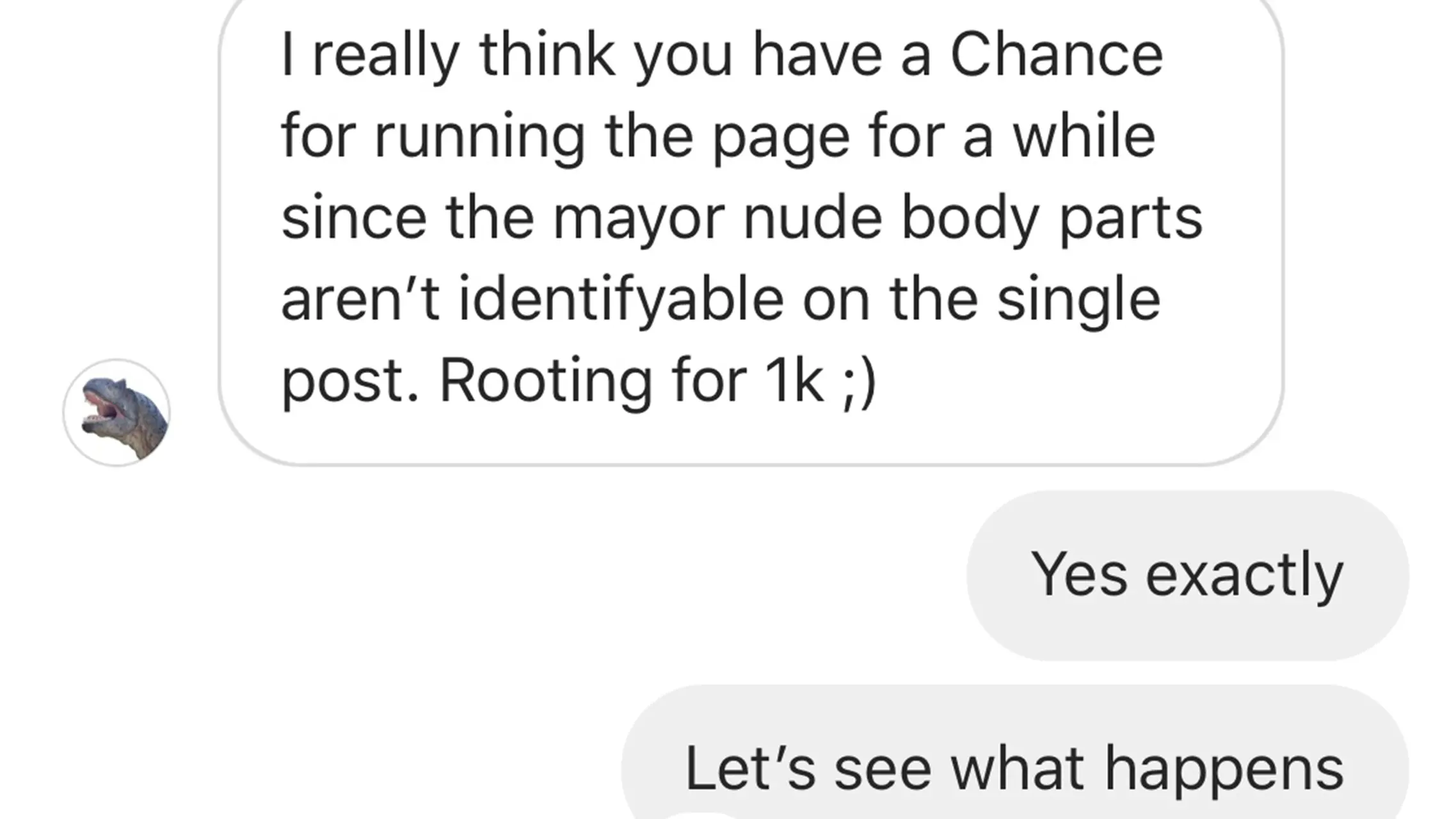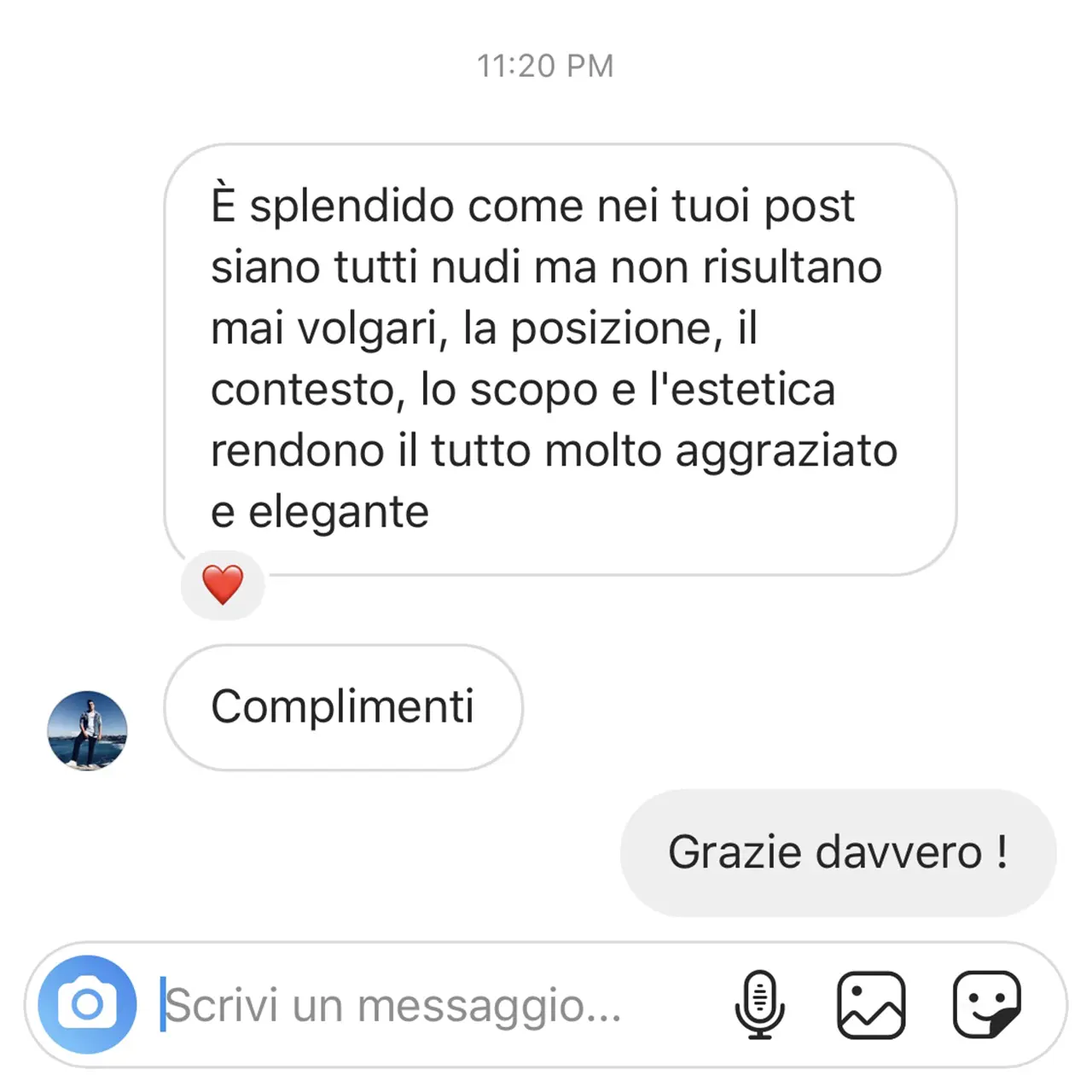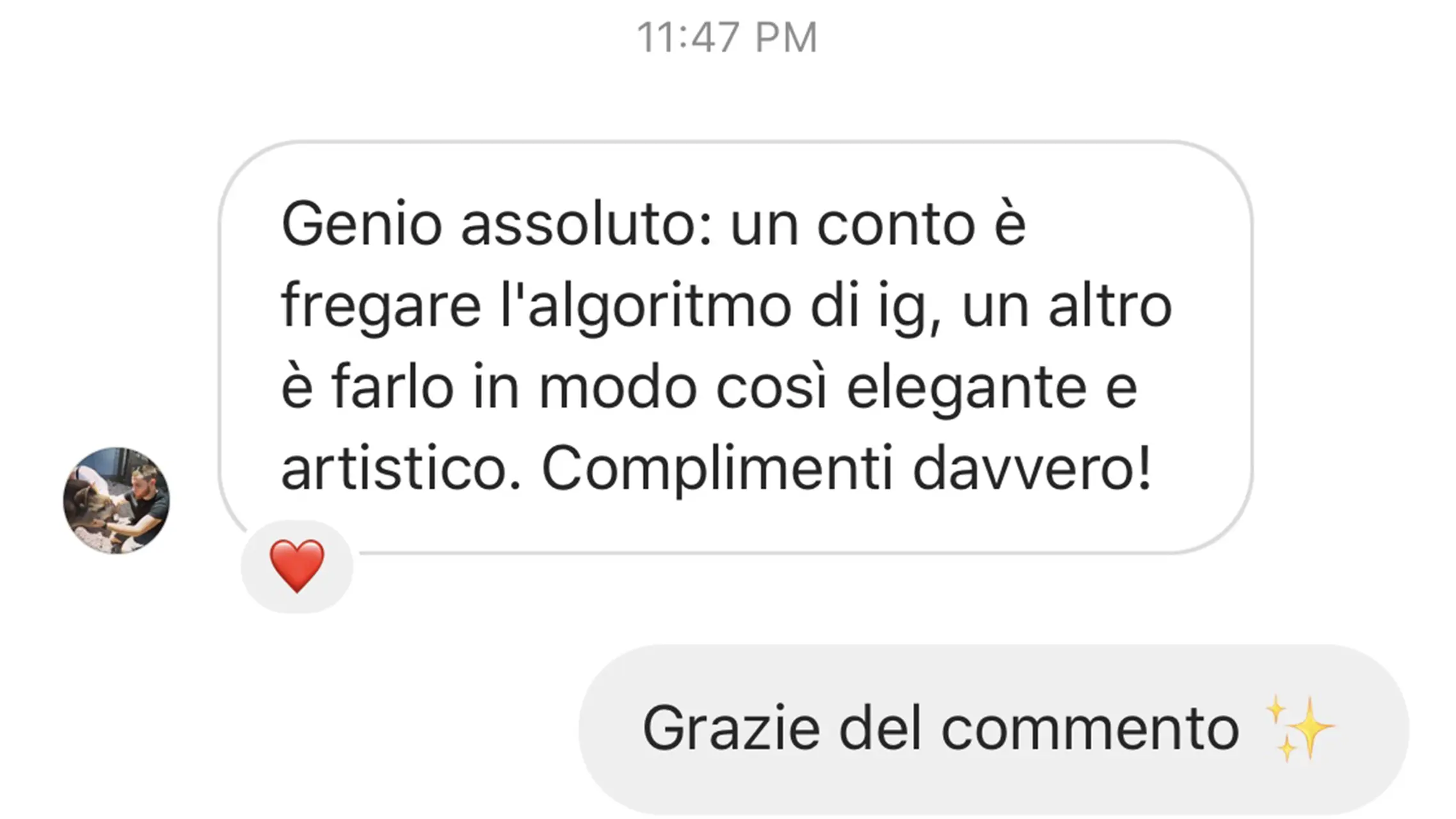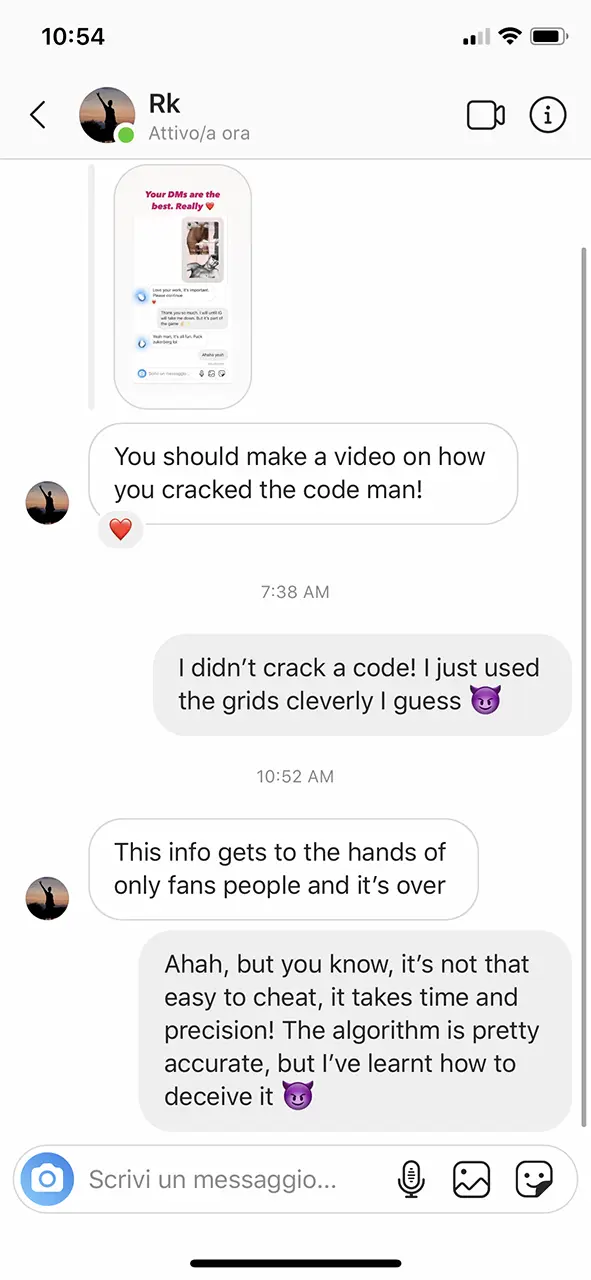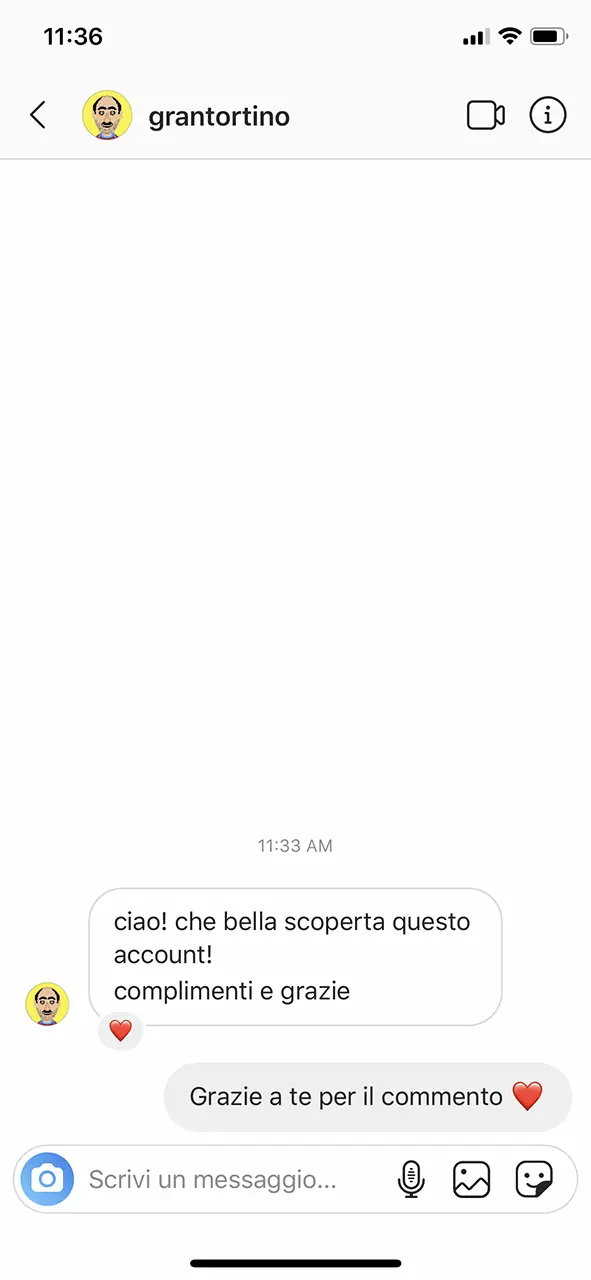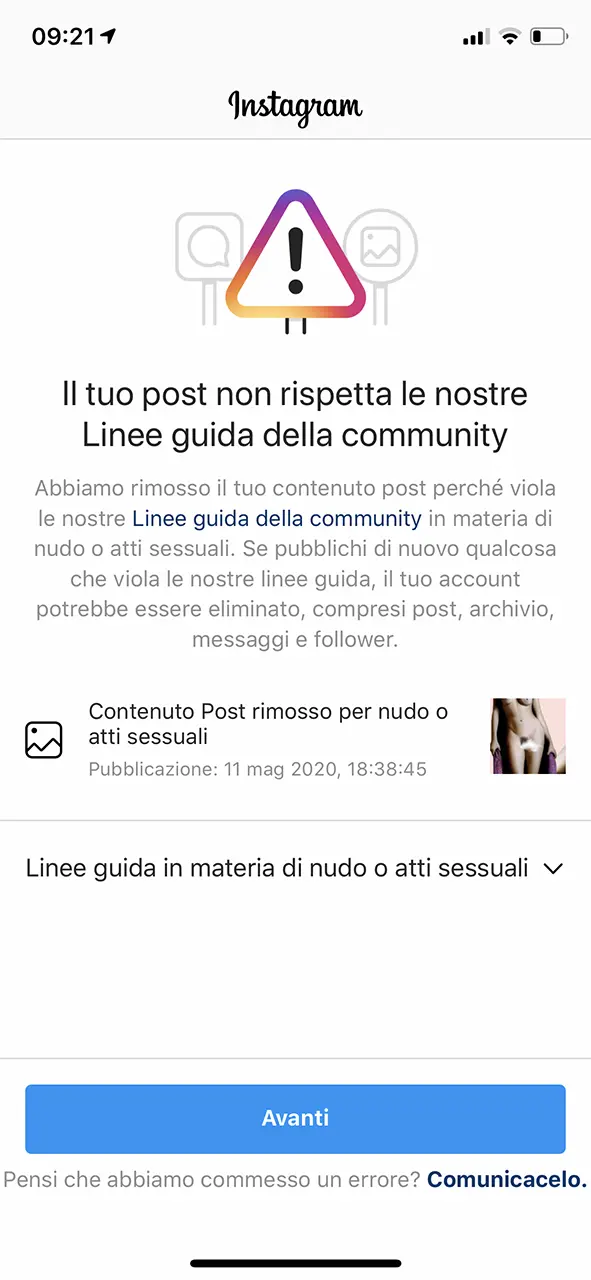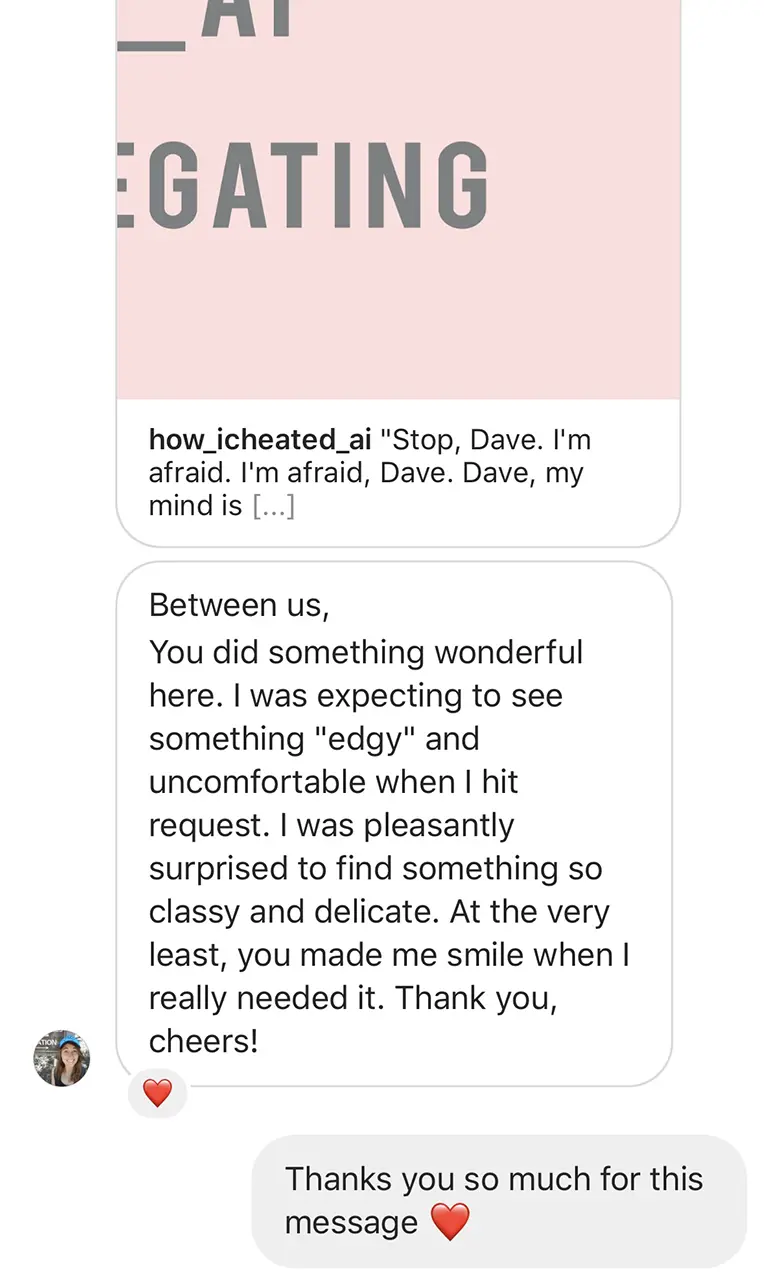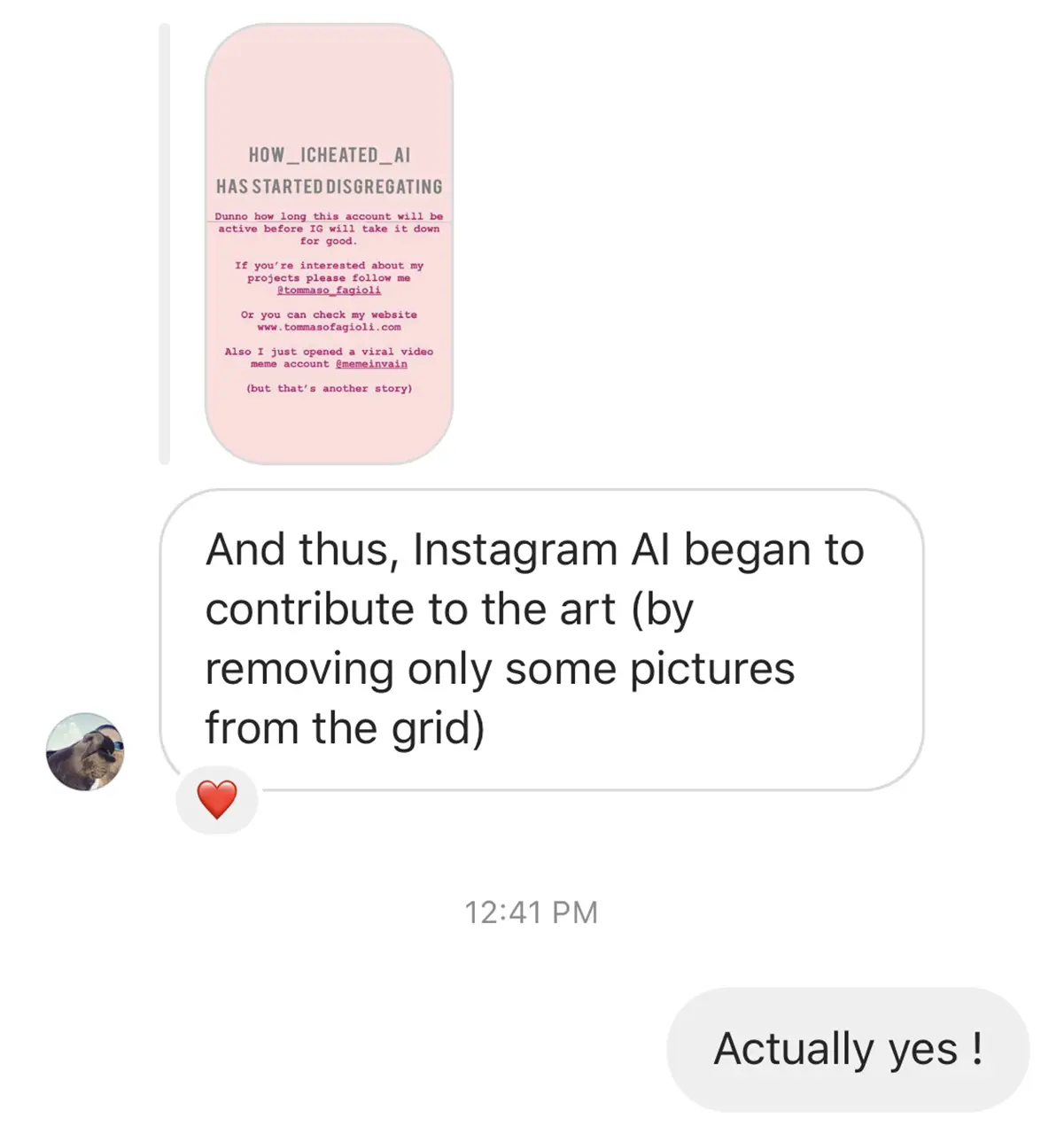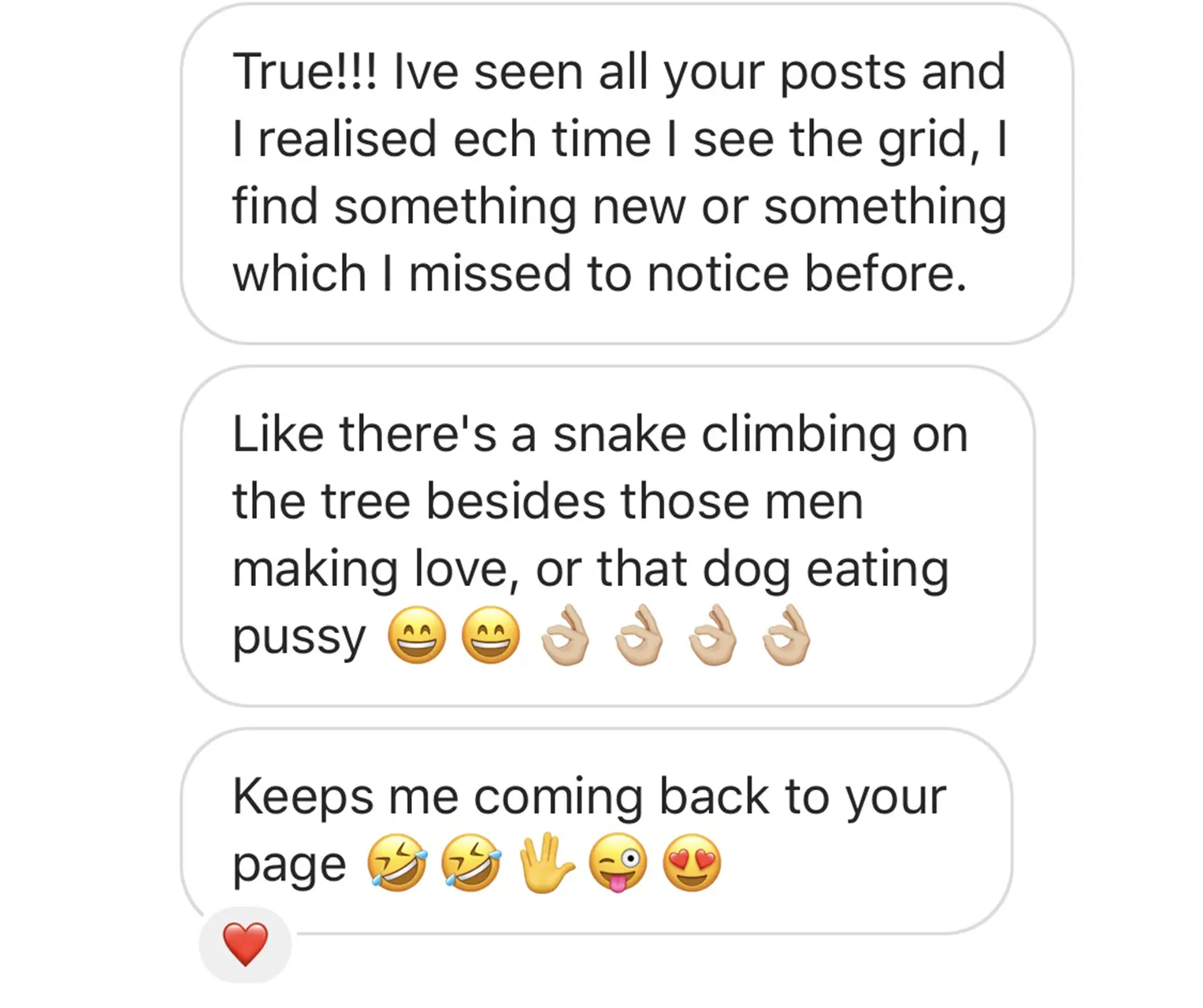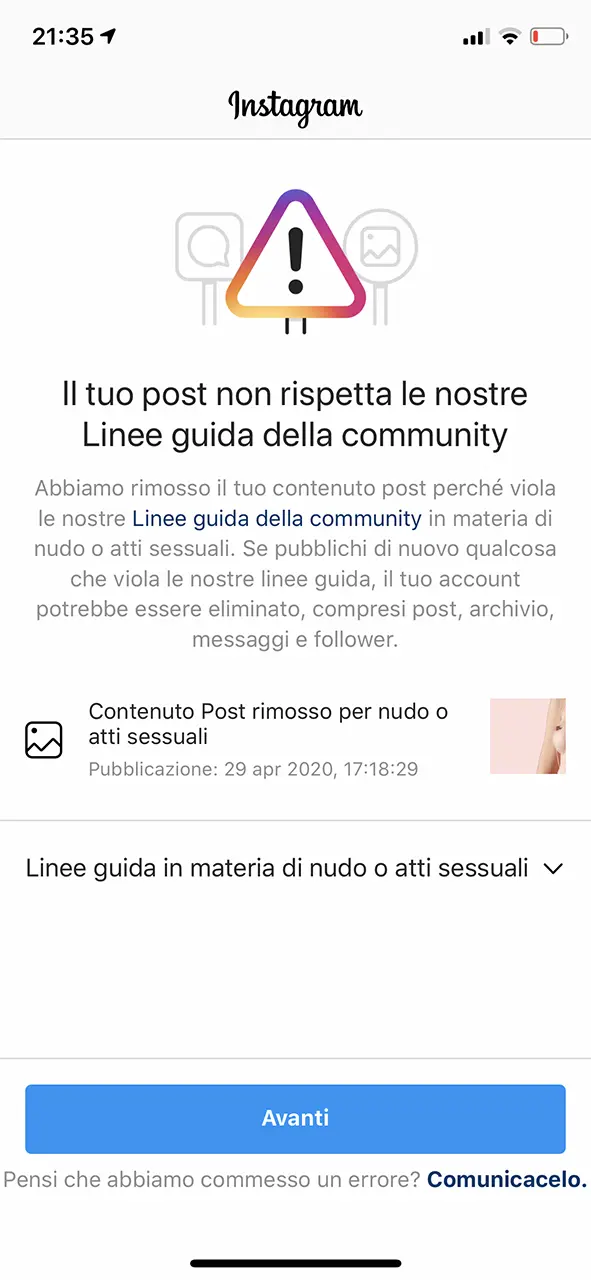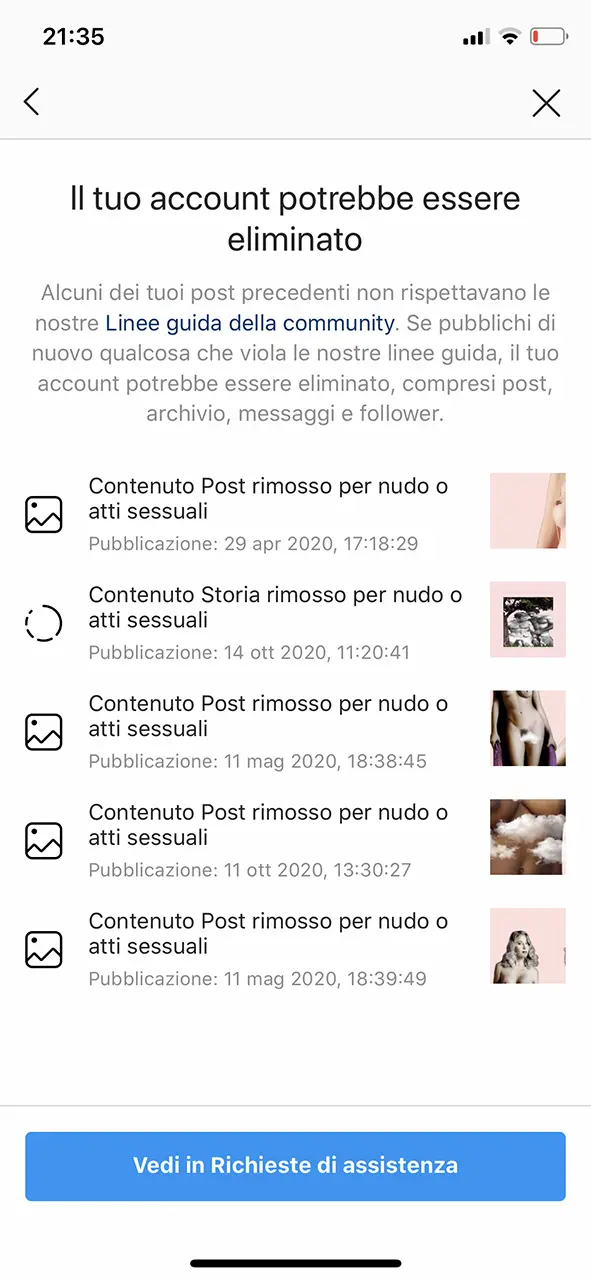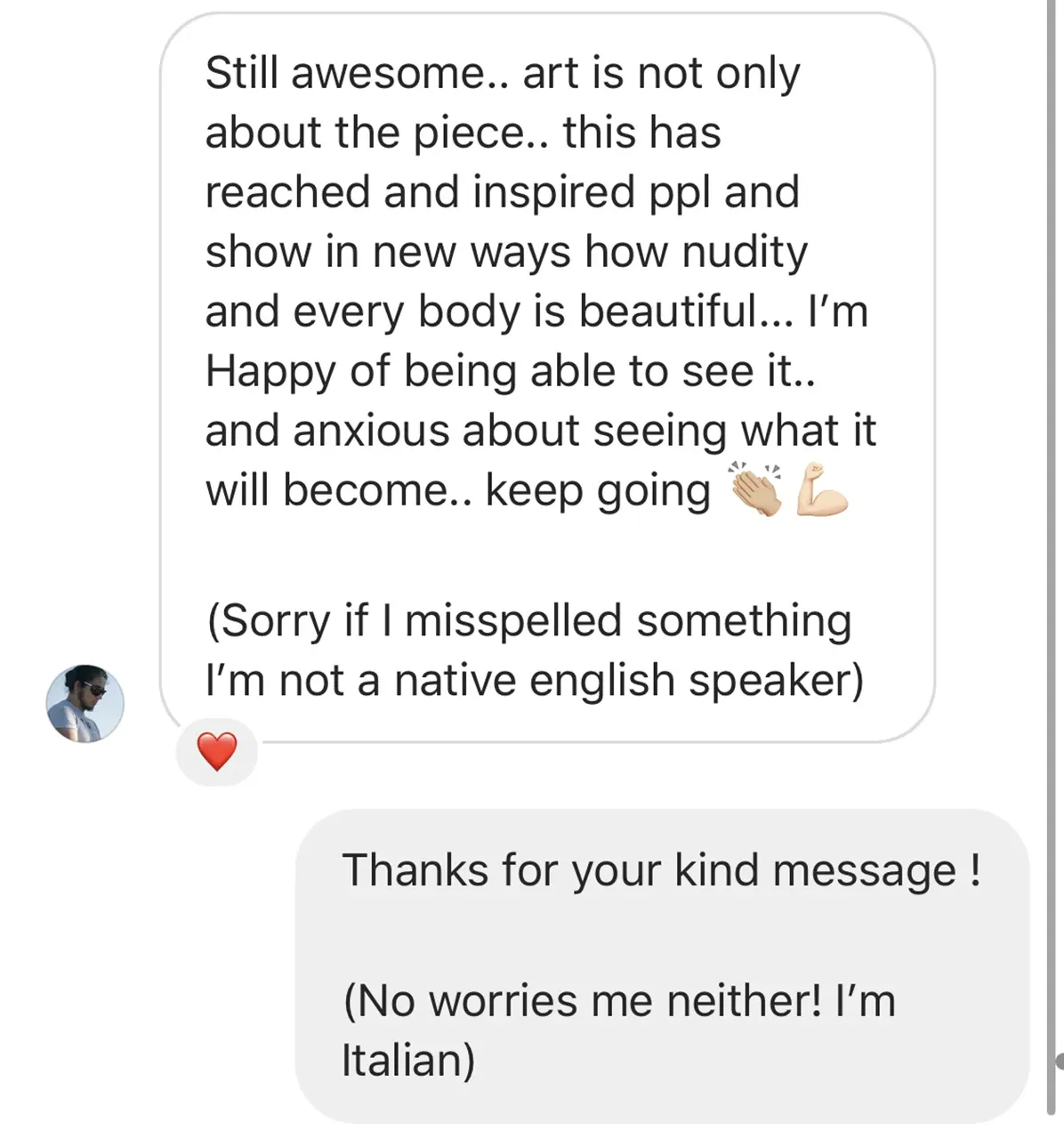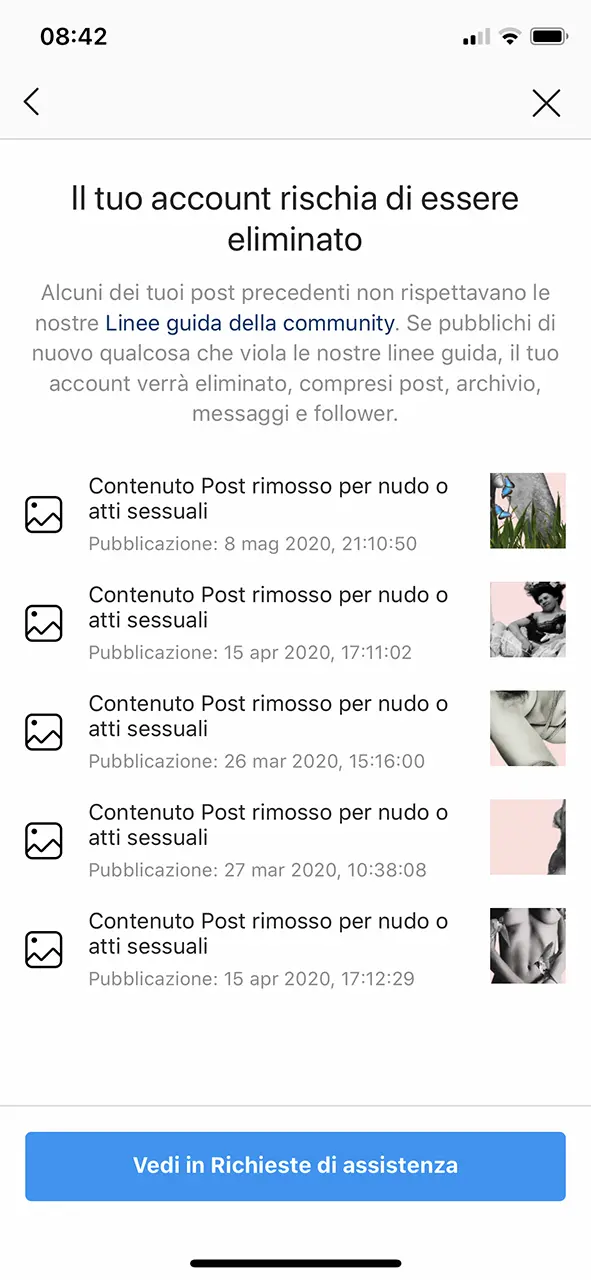2020
@how_icheated_ai (NSFW)
An online project challenging AI and IG's censorship policy via grids.
(THE REST IS) HISTORY
On October 19th 2020, after six months of clandestine erotic art gallery show, @how_icheated_ai, an experimental art account that used grids to post nudes and sex acts bypassing IG censorship algorithms, was taken down due to malicious followers reports and AI executing the removal of posts.
But that was OK.
It was the right and expected epilogue, even poetic. My intent was to challenge, mock, and question the AI and the censorship policy – with a satirical touch. The mission was accomplished and a message was sent, whatever message one could get from it.
This was my 3/4 “Artblitz“.
Continue reading below ↓
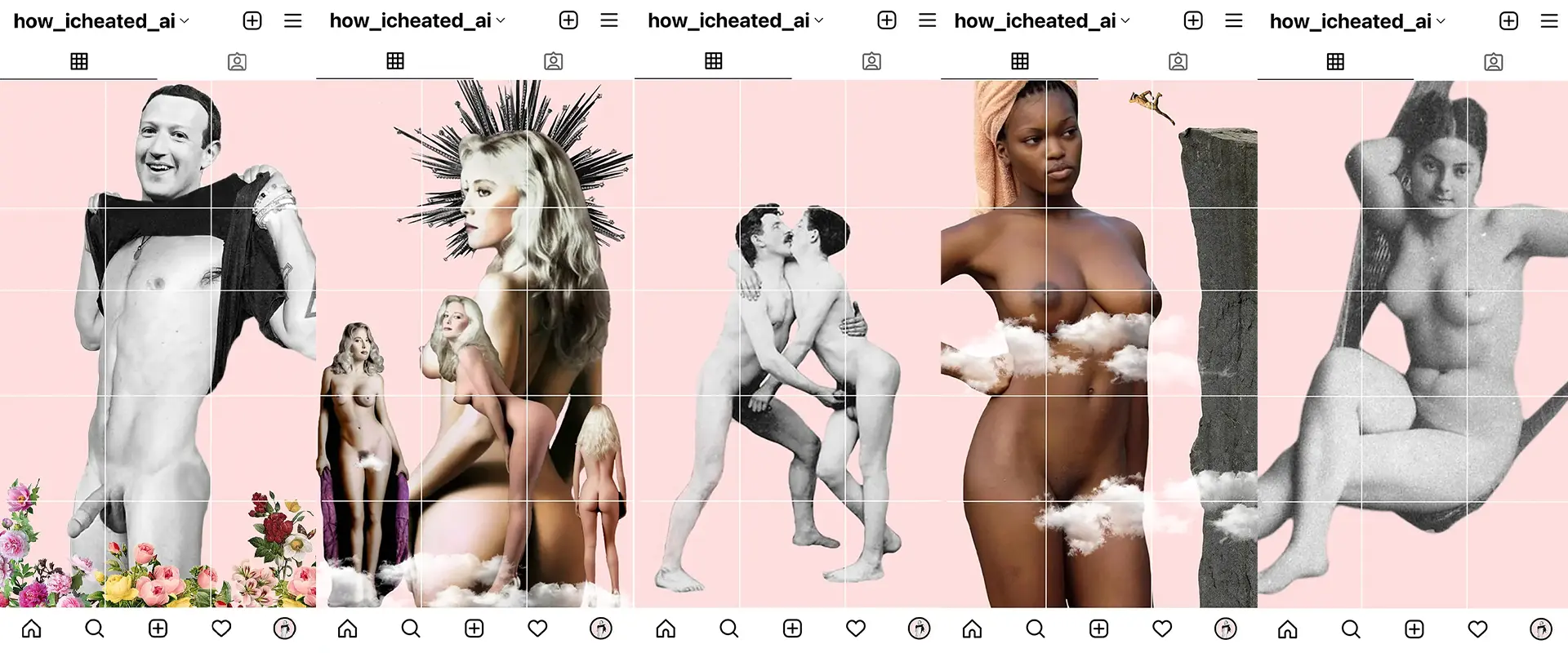
Some grid AI-cheating images published on IG.

How I cheated AI 2020 IG Profile before being taken down
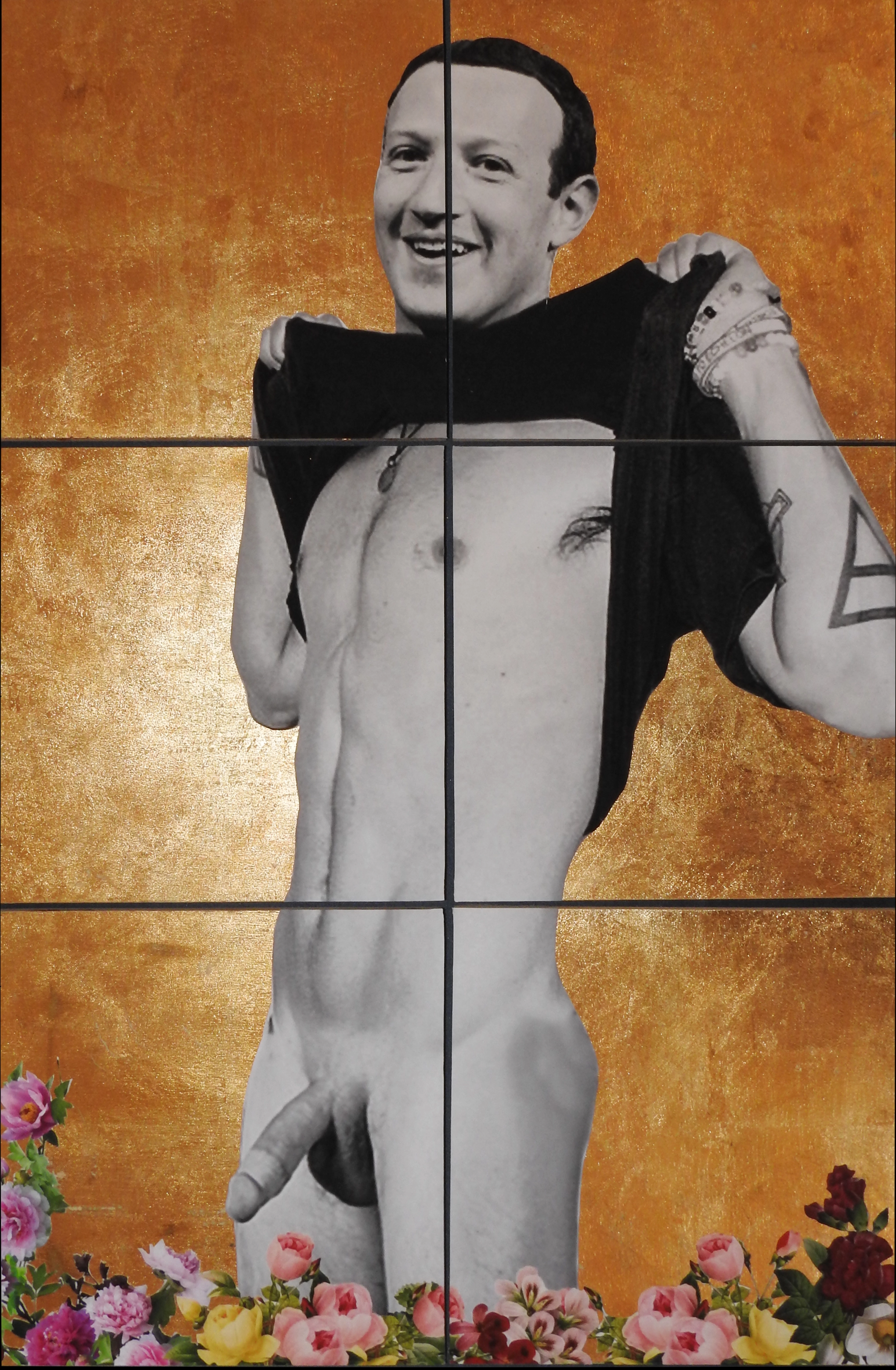
@how_icheated_ai (2020) – paper collage of Zucky over six 25 x 25 cm gilded wooden panels.
HOW IT STARED
I know lockdown isolation may trigger desire, so in this dilated time of social distancing I managed to cheat Instagram’s artificial intelligence and was able to post nudes and sex acts without being censored by the engine. How? Basically I found a “leak” in the algorithm: it can’t recognise nudes posted in grids. It’s like it can’t (so far) see the overall image – as human intelligence does.
While the account was online, an article appeared on the most important Italian news website Dagospia, written by Italian art curator Gianluca Marziani. As he puts it about the core of the project:
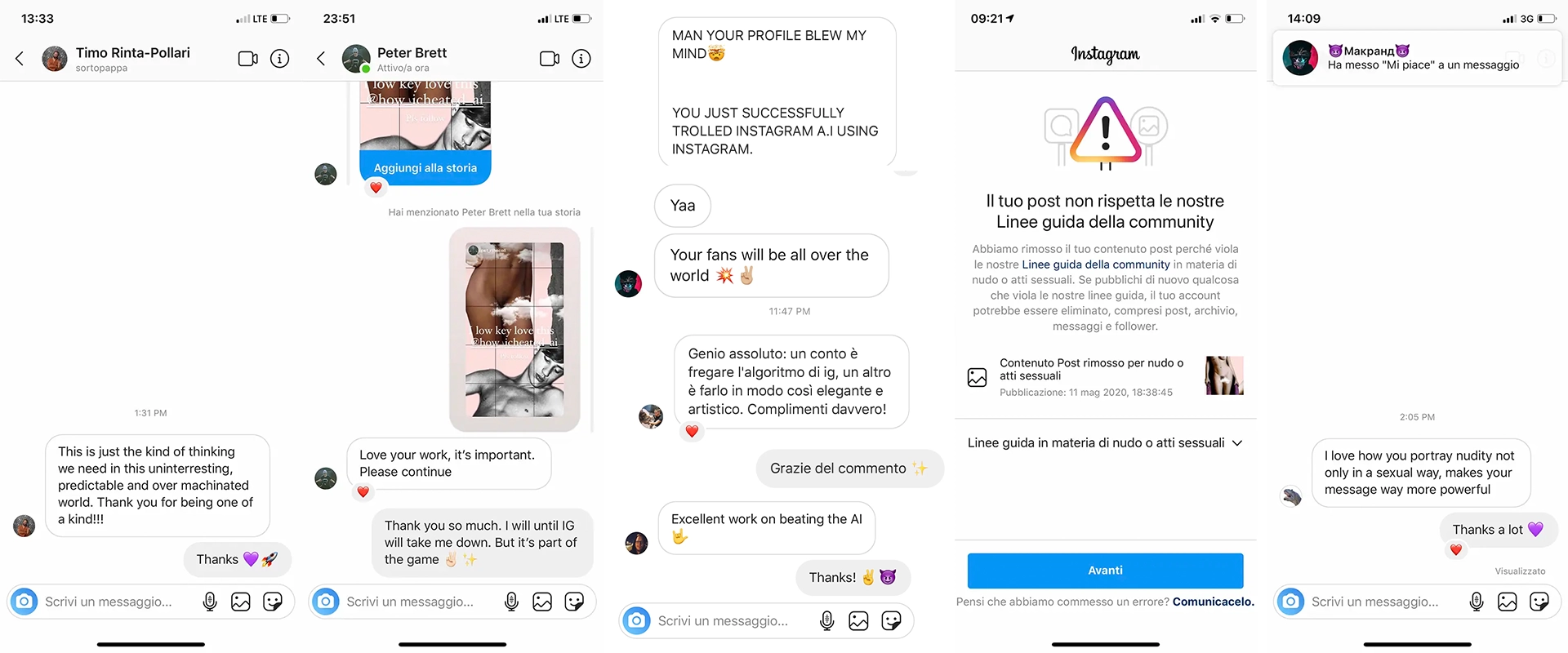
@how_icheated_ai (2020) – comments collage.
While the account was online, an article appeared on the most important Italian news website Dagospia, written by Italian art curator Gianluca Marziani. As he puts it about the core of the project:
“There is no doubt that the moral question is open to many discussions, also because it would be absurd to manage media worlds without any limitations. However, the problem concerns the drift of indiscriminate moralism on the themes of sex in its multiple meanings. Today a photo by Helmut Newton or a painting by Raffaello risks censorship ban while very succinct and super polished posts of silicone bimbos (nothing against) are tolerated, especially if they guarantee traffic: and this is not good.
[…]
Censorship on the web is a complicated subject, full of angles and edges, a hot topic for a jurisprudence that will have to regulate the new morality in the days of the web. The same companies, today holders of immense databases, will have to help the adult stage of artificial intelligence, working better on censorship policies, creating specific clusters for homogeneous groups, supporting young people with a new digital pedagogy, isolating those who destroy contents and create environments of concrete danger.”


















